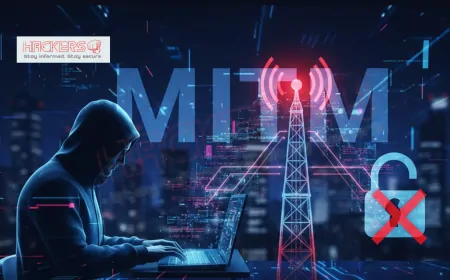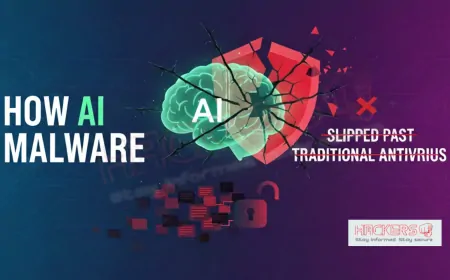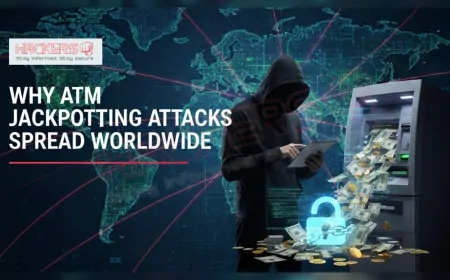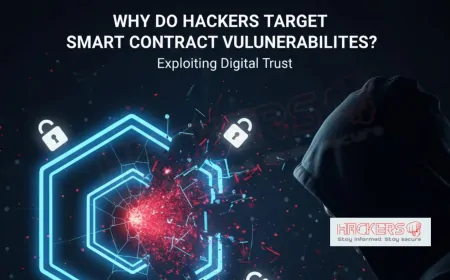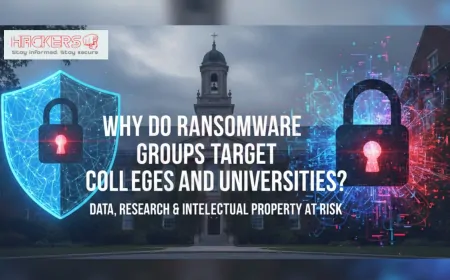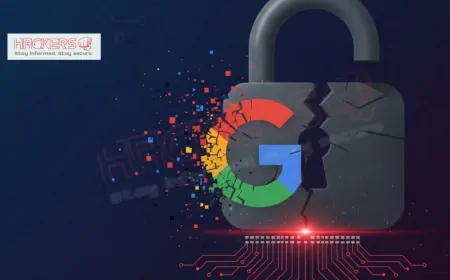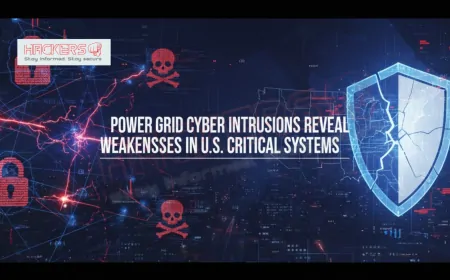What Is the Role of Blockchain in Strengthening Cybersecurity Systems?
Think about a world where your personal data is locked away in a vault that no single hacker can crack open. Or imagine businesses conducting transactions without fearing tampering or theft. This isn't science fiction: it's the promise of blockchain technology in cybersecurity. As we step into 2025, cyber threats are growing faster than ever, with global cybercrime costs expected to reach $10.5 trillion annually. Blockchain, the tech behind cryptocurrencies like Bitcoin, is stepping up as a powerful ally in the fight against these dangers. It offers a way to make systems more secure by design, using features like decentralization and immutability, which means data can't be changed once added. In this blog, we'll explore how blockchain bolsters cybersecurity, explain key concepts in easy terms, look at real examples, and discuss challenges. Whether you're a business owner, a tech enthusiast, or just curious, you'll see why blockchain is becoming a game-changer in keeping our digital world safe.

Table of Contents
- What Is Blockchain?
- Basics of Cybersecurity
- How Blockchain Strengthens Cybersecurity
- Key Applications of Blockchain in Cybersecurity
- Real-World Examples
- Challenges and Limitations
- Future Trends in Blockchain for Cybersecurity
- Conclusion
- Frequently Asked Questions
What Is Blockchain?
Blockchain is like a digital ledger, or a record book, that stores information in a way that's secure and transparent. It was first created for Bitcoin in 2008, but its uses go far beyond money. Picture a chain of blocks, where each block holds data, like transactions or records. Once a block is added, it can't be altered without changing all the following blocks, which requires agreement from the network.
How does it work? Blockchain runs on a decentralized network, meaning no single person or company controls it. Instead, many computers, called nodes, work together to verify and store data. This setup uses cryptography, which is a method of protecting information through codes, to keep things safe. For example, each block has a unique code, or hash, that links it to the previous one. If someone tries to tamper with a block, the hash changes, alerting the network.
Key features include immutability: data can't be changed easily. Transparency: everyone can see the records, but privacy is maintained through encryption. And decentralization: no central point of failure, making it hard for hackers to target one spot. In cybersecurity, these traits help build systems that are tougher against attacks. Beginners might think of it as a shared Google Doc where edits are tracked and approved by all viewers, but on a much larger, secure scale.
Blockchain isn't perfect, but its core ideas are reshaping how we handle data security. As we dive deeper, you'll see how it fits into the bigger picture of protecting against cyber threats.
Basics of Cybersecurity
Cybersecurity is all about protecting computers, networks, and data from unauthorized access or damage. In simple terms, it's the practice of keeping your digital life safe from bad actors, like hackers or viruses. The main goals follow the CIA triad: confidentiality, which keeps data private; integrity, ensuring data isn't altered; and availability, making sure data is accessible when needed.
Common threats include phishing, where scammers trick you into giving information; ransomware, which locks your files until you pay; and DDoS attacks, which overwhelm systems to make them unavailable. In 2025, these are amplified by AI, making attacks smarter and faster.
Traditional defenses use firewalls, which act like barriers; antivirus software to detect malware; and encryption to scramble data. But as threats evolve, these might not be enough alone. That's where blockchain comes in, offering new ways to reinforce these basics. For instance, its decentralized nature helps with availability by avoiding single failure points.
Understanding cybersecurity helps appreciate blockchain's role. It's not a replacement, but a boost to existing systems, making them more resilient in our connected world.
How Blockchain Strengthens Cybersecurity
Blockchain strengthens cybersecurity by addressing key weaknesses in traditional systems. First, its decentralization means data isn't stored in one place. Instead, it's spread across many nodes, so if one is attacked, the others keep the system running. This boosts availability, a core part of the CIA triad.
Second, immutability ensures once data is added, it can't be changed without consensus. This protects integrity: hackers can't alter records undetected. For example, in supply chains, blockchain tracks goods from start to finish, preventing fraud.
Third, cryptography provides strong confidentiality. Public key infrastructure, or PKI, uses pairs of keys to encrypt data, so only authorized users can access it. This is like having a lock where only the right key works.
Blockchain also uses smart contracts: self-executing code that automates agreements. These reduce human error and enforce rules automatically, adding another security layer.
In 2025, with AI threats rising, blockchain's transparency helps trace attacks back to their source. While not immune to all risks, like 51 percent attacks where a group controls most of the network, it offers robust defenses when combined with other tools. Overall, it shifts security from reactive to proactive, building trust in digital systems.
Key Applications of Blockchain in Cybersecurity
Blockchain has many practical uses in cybersecurity. One major area is secure data storage. By distributing data across nodes, it prevents single-point breaches. For instance, decentralized storage protects critical info from ransomware.
Another is identity management. Blockchain creates secure digital identities, reducing identity theft. Users control their data, sharing only what's needed, like in self-sovereign identity systems.
In IoT, or Internet of Things, blockchain secures device communications. With billions of connected devices, it ensures tamper-proof interactions, preventing hacks on smart homes or factories.
Software integrity is another: blockchain verifies downloads by storing hashes, unique digital fingerprints, to ensure no malware is added.
DNS security benefits too. Traditional DNS is vulnerable; blockchain makes it decentralized and immutable, stopping site hijacks.
Finally, in mitigating DDoS attacks, its structure withstands floods of traffic. These applications show blockchain's versatility in tackling real security issues.
To summarize some key applications, here's a table:
| Application | How Blockchain Helps | Benefits |
|---|---|---|
| Data Storage | Decentralized and immutable records | Reduces breach risks |
| Identity Management | User-controlled credentials | Prevents theft |
| IoT Security | Tamper-proof device links | Secures networks |
| Software Verification | Hash storage for checks | Detects malware |
| DNS Protection | Immutable domain mapping | Stops hijacks |
This table highlights how blockchain applies to everyday security needs.
Real-World Examples
Blockchain is already making waves in cybersecurity. Take Barclays: they use it for secure fund transfers and storing customer data on distributed ledgers, reducing fraud risks.
Cisco secures IoT devices with blockchain, eliminating single failure points through encryption and ledgers. This helps in industries like manufacturing.
Coinbase employs blockchain for wallet security, adding employee checks to enhance protection.
The Australian Government is building a blockchain network for secure documents, partnering with IBM.
Philips Healthcare uses blockchain and AI for analyzing health data securely, keeping patient records safe.
The Chinese Military applies it to protect government info. Founders Bank in Malta stores crypto decentrally.
The State of Colorado explores it for record security. J.P. Morgan's Quorum platform uses smart contracts for private deals.
Health Linkages secures patient records with access controls and tracking. These examples show blockchain's practical impact across sectors.
Challenges and Limitations
While promising, blockchain has hurdles in cybersecurity. Scalability is a big one: current systems handle limited transactions per second, struggling with large-scale needs.
Private key management: lose your key, and data is gone forever. This requires strong procedures.
High costs: running blockchain demands power and storage, pricey for small firms.
Lack of regulation: no global standards yet, leading to inconsistencies.
Skills shortage: needs experts in programming and blockchain, hard to find.
Vulnerabilities like 51 percent attacks, where majority control manipulates the chain; endpoint issues; routing attacks; phishing; and privacy leaks. Smart contracts can have bugs, as seen in hacks.
Addressing these needs better tech, education, and laws. Blockchain isn't a cure-all, but with fixes, its benefits shine.
Future Trends in Blockchain for Cybersecurity
In 2025 and beyond, blockchain will evolve. The security market is set to grow from $20 billion in 2024 to $250 billion by 2029. Trends include decentralized identity systems, where users control credentials.
Integration with AI for smarter threat detection. Quantum-resistant cryptography to counter future computing power.
More in IoT: securing billions of devices. Blockchain for supply chains, ensuring secure tracking.
Regulatory push: governments mandating blockchain for critical sectors. As adoption grows, solutions to scalability, like layer-2 tech, will emerge. The future looks bright, with blockchain central to robust cybersecurity.
Conclusion
Blockchain plays a vital role in strengthening cybersecurity by providing decentralization, immutability, and strong encryption. It supports the CIA triad, offers applications in data storage, identity, IoT, and more. Real examples from companies like Barclays and Cisco show its impact. Yet, challenges like scalability and key management exist. As we look to the future, with market growth and new trends, blockchain will be key in fighting cyber threats. For beginners and experts, embracing it means a safer digital world. Start exploring how it fits your needs today.
What is blockchain?
Blockchain is a decentralized digital ledger that records transactions securely and transparently.
How does blockchain improve security?
It uses decentralization and immutability to prevent tampering and single-point failures.
What is the CIA triad?
It stands for confidentiality, integrity, and availability, the core goals of cybersecurity.
Can blockchain prevent all hacks?
No, but it reduces risks when combined with other measures.
What is immutability?
It means data can't be changed once added to the blockchain.
How does blockchain help IoT?
It secures device communications with tamper-proof links.
What are smart contracts?
Self-executing code that automates agreements on blockchain.
Is blockchain scalable?
Current versions have limits, but improvements are coming.
What is a 51 percent attack?
When a group controls most of the network to manipulate it.
How does blockchain protect privacy?
Through encryption and user-controlled data sharing.
What industries use blockchain for security?
Finance, healthcare, government, and IoT sectors.
Are there costs to blockchain?
Yes, it requires computing power and storage.
What is PKI?
Public key infrastructure, using key pairs for encryption.
Can blockchain stop DDoS attacks?
It helps by distributing data, making overloads harder.
What is decentralized identity?
Users control their credentials on blockchain.
How does blockchain verify software?
By storing hashes to check for changes.
What regulations affect blockchain?
Global laws are emerging for security and privacy.
Is blockchain only for crypto?
No, it has many uses beyond currency.
What future trends involve blockchain?
Integration with AI and quantum-resistant tech.
Why learn about blockchain now?
It's growing fast in cybersecurity, offering new opportunities.
What's Your Reaction?







